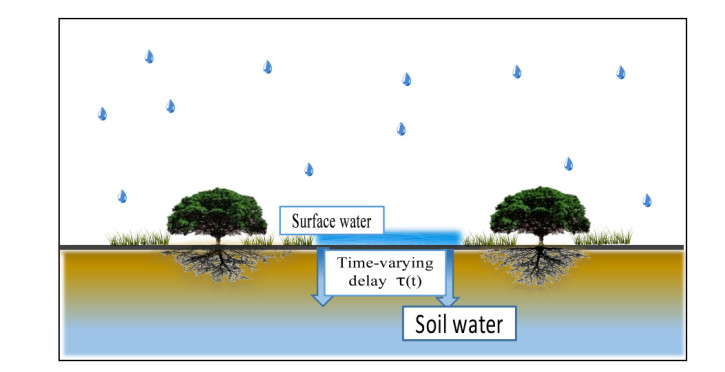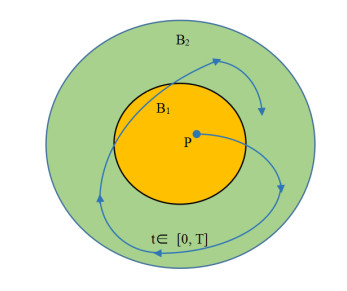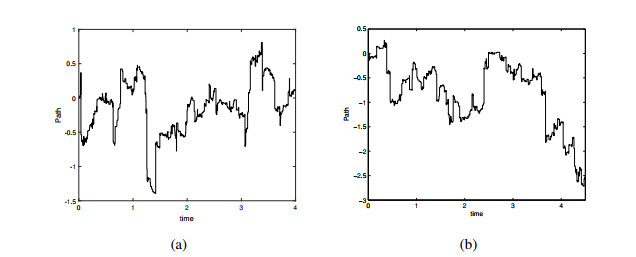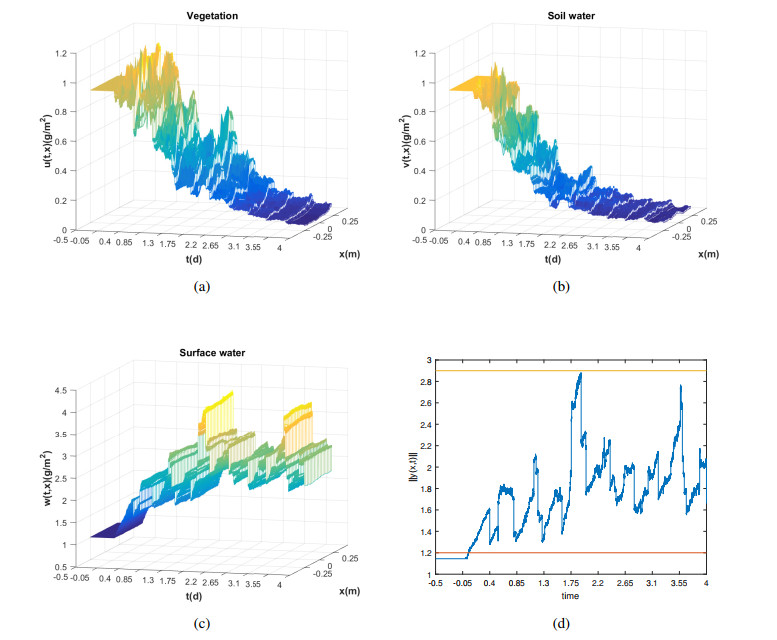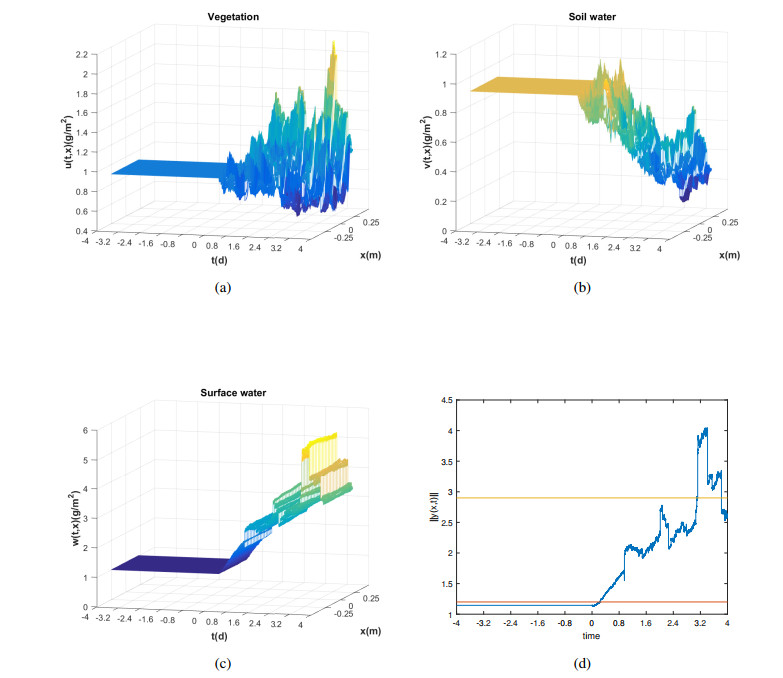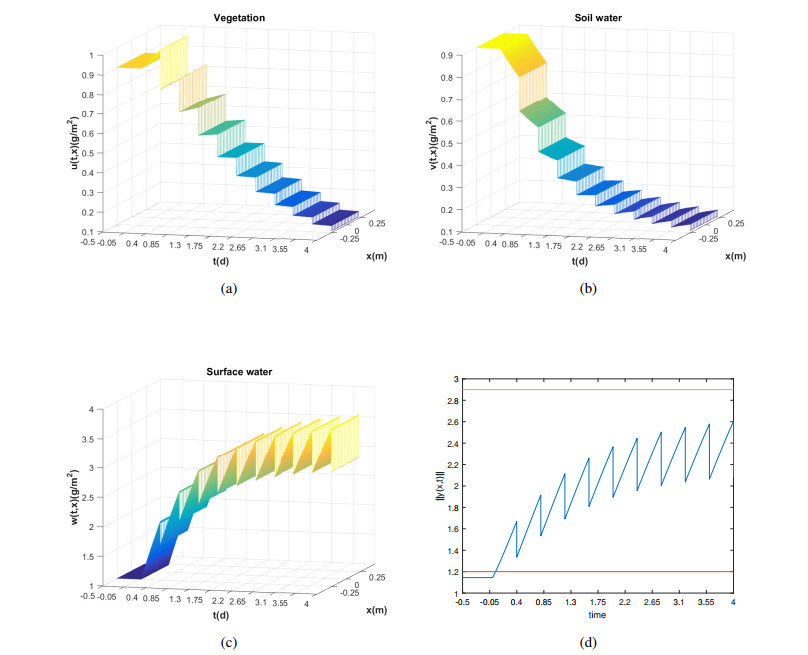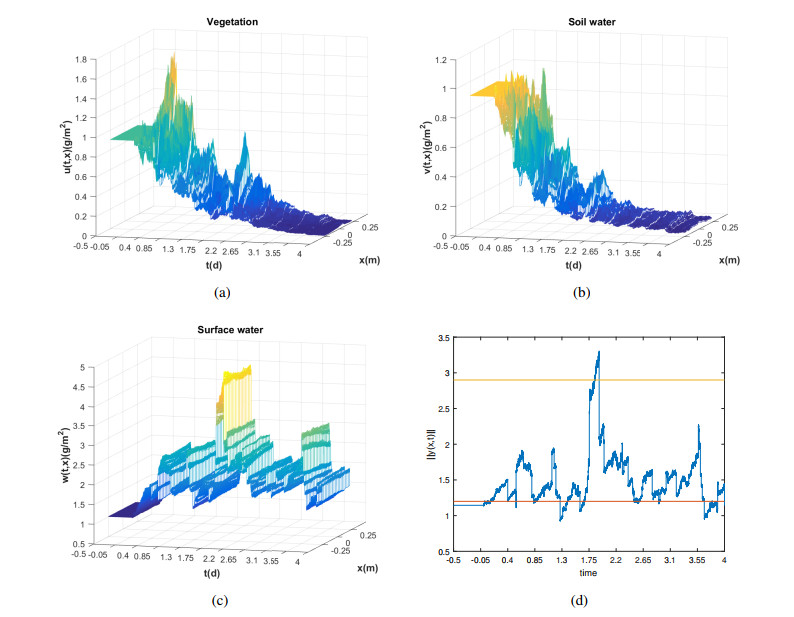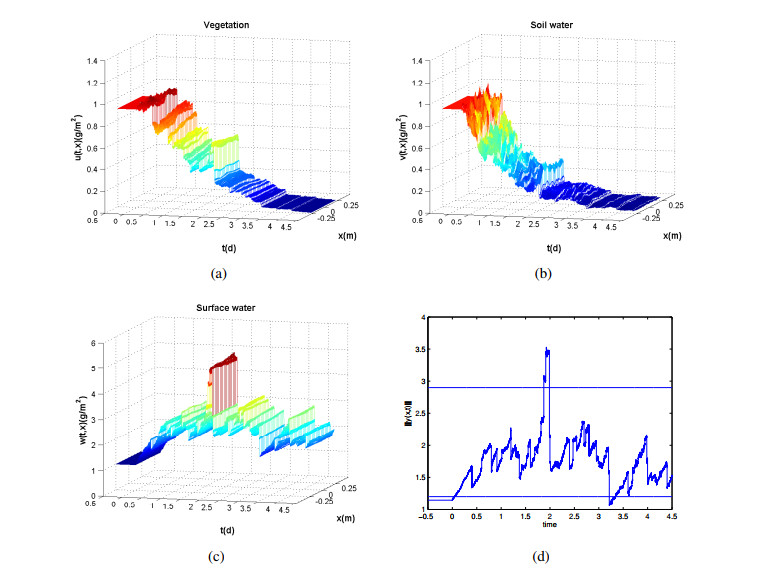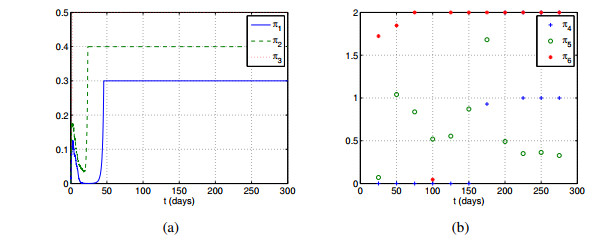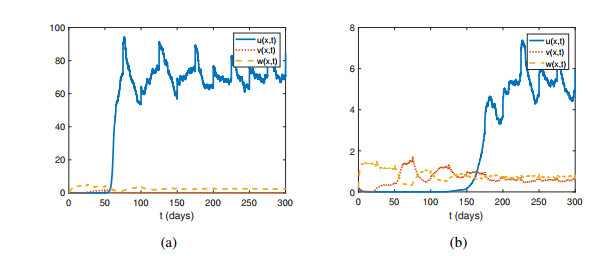1.
Introduction
Improving agricultural production through productivity enhancement is increasingly gaining global attention. Sustainable Development Goal (SDG) number two (2) envisions a food-secure, hunger-free, and better-nutritioned world [1] Achieving this requires doubling agricultural productivity by 2050 [2]. Focusing on agricultural productivity growth is necessary in the wake of diminishing returns from input intensification. Increased population and settlements [3] and environmental threats like climate change [4,5] continue to impose limitations on input expansion. Among many strategies, increasing agricultural investment expenditure is regarded as a critical driver of productivity growth.
SDG target 2a acknowledges that attaining SDG goal 2 requires increasing agricultural investment such as rural infrastructure, agricultural research and extension services, technology development, and plant and livestock gene banks [6]. Literature identifies several links between agricultural expenditure and productivity. Agricultural expenditure improves public infrastructure, corrects agricultural externalities [7], promotes agricultural, and human capital development, and provides employment support [8]. Moreover, agrarian expenditure stimulates agricultural research and development (R&D) [9,10] and promotes technology transfer and adoption [11,12]. Unsurprisingly, international, regional, and national policy frameworks have actively embraced agricultural expenditure as an agricultural productivity growth enhancer.
The AUC, through the Maputo Declaration on Agriculture and Food Security of 2003, established the Comprehensive Africa Agriculture Development Programme (CAADP) to spearhead agricultural sector development. CAADP is motivated to support agriculture-led growth designed to promote agricultural output growth, improve food security, and reduce poverty [13]. In this regard, governments committed to allot at least 10% of the total government budget to the agriculture sector. Accordingly, countries were expected to attain an average 6% annual growth in agricultural output. The 2014 Malabo Declaration upheld the commitment to Accelerated Agricultural Growth and Transformation for Shared Prosperity and Improved Livelihoods initiative [14]. Furthermore, the Malabo Declaration underscored that at least doubling agricultural productivity growth by 2025 is required to accelerate agricultural growth.
Following the adoption of CAADP, the major question is whether and to what extent has the programme transformed agriculture sector in Africa, with South Africa as a case study. Evidence on the impact of government agricultural expenditure has been mixed, although tilted in favor of significant positive impact [15,16,17] against negative impact [18]. In South Africa, evidence connecting government agriculture expenditure and agricultural TFP is scant. Some studies have looked at TFP growth at the aggregate economy level [19,20,21], manufacturing sector [22], and district-municipality levels [23]. In the agriculture sector, some studies focused on the measurement of agricultural TFP [24,25]. Attempts on determinants of agricultural TFP are found at district level [26] and so could not examine the effect of the CAADP. The impact of government agricultural expenditure was examined [7,27]. However, [27] focused on agricultural output rather than TFP growth. Our study builds on [7] who assessed how agricultural expenditure impacts agricultural TFP, finding a positive significant impact.
We make two contributions on the impact of government agricultural expenditure on agricultural TFP in South Africa. Firstly, while in [7] the computation or source of data for agricultural TFP is not clear, we motivated the computation of agricultural TFP from two methods the Growth Accounting approach and the Malmquist DEA approach. By so doing, we manage to capture the parametric (growth-accounting) and non-parametric (Malquist DEA) aspects of TFP, and therefore provide a robust assessment.
Secondly, we recognized and controlled for structural breaks in the data. After confirming the presence of structural breaks using the Zivot-Andrews test, we used year dummies to capture the structural breaks. When structural breaks are known, then estimated coefficients are unbiased, and post-break window forecast is precise [28]. The South African economy, and therefore the agriculture sector has been going through structural changes (the end of Apartheid era in 1994) and experiencing economic recessions. For example [29] shows that after the end of Apartheid in 1994, the contribution of agriculture to GDP declined significantly. Hence by controlling for structural breaks, our study provides more robust and unbiased estimates.
The study proceeds in the following sections: (2) outlines the CAADP in South Africa, (3) covers the agricultural TFP measurement techniques, (4) analyses empirical literature, (5) details the methodology, (6) presents and discusses the results, and (7) concludes.
2.
Comprehensive Africa agricultural development programme in South Africa
South Africa launched its CAADP implementation process on 20 October 2011 but is yet to sign its CAADP compact. The implementation of CAADP is of national interest, being a policy area in the Medium-Term Strategic Framework (MTSF) 2014-2019. The MTSF targeted 95% implementation of CAADP by 2019. The parliamentary monitoring group (PMG) (2021) reported that South Africa has over 70 agriculture programmes supporting CAADP. However, the African Union Commission Development Agency [30] notes that South Africa is lagging in implementing CAADP. Despite conducting a national consultative process, the country is yet to sign its compact and a National Agriculture and Food Security Investment Plan, which remains in draft. Elsewhere, over 50 countries have since signed their compacts and have national investment plans in place. Due to the low progress in implementing CAADP, SA is far from meeting its CAAPD goals and targets. The recent (2017) AU-DA report on implementing the Malabo Declaration gives SA an overall score of zero against a target of 3.3. This shows that SA is not on track. Table 1 shows South Africa's CAADP progress.
Table 1 shows that over the period 1995-2019, SA has failed to meet any of the CAADP goals. Also, she compares to her peers. Over the same period, Africa allocated an average of 4.2% of government expenditure to agriculture and recorded an average growth in agriculture output of 4.2% against 1.59% and 0.41% for SA.
Despite inferior performance on CAADP goals, South Africa has recorded better agricultural investment than its peers. The higher orientation index, averaging 0.63 between 1995 and 2019, is well above that for Sub-Saharan Africa (0.20). While the index of 0.63 reflects underinvestment, it's important to note that South Africa invests more of its agriculture GDP back into the agriculture sector than its regional counterparts.
The Malabo Declaration emphasized that African governments need to double agricultural productivity to achieve the 6% agricultural output growth target. However, South Africa and Africa as a whole are far below this target. As Figure 1 shows, global agricultural TFP growth has been on an upward trend, recording 0.2%, 1.1%, and 1.7% for the periods 1961–1980, 1981–2000, and 2001–2016. Nevertheless, for South Africa, following a remarkable increase from -0.1% between 1961 and 1980 to 2.4% between 1981 and 2000, agricultural TFP growth declined to 1.3% between 2001 and 2016. South Africa's agricultural TFP growth remains strong against most regions in Africa, yet achieving the Malabo target looks impossible shortly.
Declining agricultural TFP growth questions the sustainability of agricultural output expansion in South Africa. Globally, agricultural TFP growth is substituting resource intensification as the primary source of increase in agricultural production. However, South Africa and Africa at large still rely on the latter. While agricultural output grows gradually in South Africa, the growth is mainly sponsored by input intensification rather than TFP growth. As Figure 2 shows, there is a positive correlation between input growth and output. The output growth (2.8%) for the period 1962–1980 is due to a 2.8% growth in input use. When input growth declined to -1.1% during the period 1981–2000, output growth also decreased to 1.3%. This shows the vulnerability of agricultural output growth to input expansion and contraction.
African governments continue to prioritize agriculture-led growth strategies. The establishment of CAADP through the adoption of the Maputo (2003) and Malabo (2014) Declarations underscored the importance agriculture has in the region. The commitment to allocate at least 10% of government expenditure to agriculture and targeting an average 6% growth in agriculture production underpinned by doubling agricultural productivity highlights the thrust of CAADP. However, South Africa is lagging in the implementation process and is yet to sign its compact and national investment plan. Accordingly, it has not met any of the targets since the CAADP was established and launched in 2011. Agricultural TFP growth is low and falling, while low agricultural output growth is anchored more on input intensification and less on TFP growth. This study, therefore, examines the impact of agricultural expenditure on agricultural TFP growth in Africa.
3.
Total factor productivity (TFP) measurement approaches
Productivity growth measures output growth that is not accounted for by changes in factor input(s) [31]. There are two broad measures of productivity, single input/partial productivity and multi-input/TFP. The latter attributes change in output to a single factor, while the former measures aggregate output per aggregate input used in production. The partial measure fails to capture the contribution of other inputs like fertilizer, seed variations, and capital [32]. [33] relates the superiority of TFP to the dominant neoclassical economic growth models by [34], which associates TFP growth with innovation and technological progress. There are two approaches to TFP measurement- frontier and non-frontier. Each approach can be subdivided into parametric and non-parametric techniques.
In the frontier approach, the best-observed combinations of inputs-outputs are estimated and compared to the rest of the sample observations [35]. TFP growth is explained by technical progress and technical efficiency. The former leads to outward shifts in the production frontier. The latter causes movement towards the production frontier [32]. Under the non-frontier approach, a producer is assumed to be technically efficient, implying that TFP growth is only associated with technological progress [35]. Approaches that ignore efficiency have been mainly criticized for portraying an incomplete picture of productivity growth [36]. Parametric and non-parametric techniques can estimate both frontier and non-frontier approaches.
The commonly used frontier techniques are the Stochastic Frontier, the growth accounting (parametric), and the Malmquist-DEA (non-parametric). The choice between the frontier approaches has been and continues to be an empirical issue. Given their strengths and weaknesses, most studies use all techniques. The present study would have done so. However stochastic frontier approach requires input prices, which are hardly available in the agriculture sector; hence we use the growth accounting, and Malmquist-DEA TFP approaches.
3.1. The growth accounting approach
Growth accounting is a parametric approach that measures TFP as a residue of the growth process. In this sense, TFP is the growth rate of output that is not accounted for by the share-weighted growth rates of production inputs [37]. Usually, the production technology used for growth accounting is in the form of a Cobb-Douglas function. The Cobb-Douglas production function has intensively been used in previous studies [38,39,40]. The Cobb-Douglas functional form is linear in logs with parameters equal to production elasticities and is relatively easy to estimate. It continues to be applied in growth decompositions [37,41,42]. We follow [37] in estimating a Cobb-Douglas production function in which an instrumental variables approach is used to determine inputs cost shares as estimated elasticities.
The Cobb-Douglas production function in logarithm form is as follows:
Y represents the agricultural output and X a vector of inputs, with subscripts i and t indicating country and time. Ait's are intercept terms representing technology over time and countries, and ϑi are production elasticities for n-factor inputs. Lastly, ε is the stochastic error term. In this specification, an index of ATFPi,t is given by the change in Ai,t over time. Taking the derivative of Eq (1) with respect to time expresses output growth in terms of percentage changes in the variables as follows:
The last term usually suffers from independence assumption on the random error term with mean zero and constant variance. Dropping it and setting ATFPi,t as the subject gives:
The dot above each variable represents its growth rate. Eq (3) says that the growth in ATFP is obtained as the difference between the growth in aggregate agricultural output and growth in aggregate inputs. The elasticities ϑi's are considered and interpreted as cost-shares (the proportion of output that each input receives in payment for its services) assuming constant returns to scale.
To compute the agricultural TFP indices for South Africa, we follow [37], who compiled a panel data set of selected countries in Africa. Unlike [37], whose panel is comprised of countries from different regions in Africa, we set up a panel of 121 Southern African Development Community (SADC) countries, where South Africa is a member. We argue that agricultural policies are more harmonized within a particular region. Accordingly, such countries are expected to follow similar policy frameworks. Computations from such a sample provide a better assessment of agricultural development than otherwise. First, we use agricultural output as the dependent variable and five input variables (land, labor force, fertilizer input, farm machinery, and livestock) to obtain the input cost shares. We assume constant returns to scale, which leads us to use a constrained regression in which all the elasticities add up to unity. The description of the output and the respective inputs and data sources are presented in Table 2 with the summary statistics. While instrumental variable regression allows us to control for possible endogeneity, the resulting coefficients did not add up to unity, and there were negative elasticities.
Currently, there are 16 SADC countries. However, data for agricultural output for Comoros, Democratic Republic, Eswatini, and Lesotho are not available and consistent from 1961. Hence, they were omitted. The computation of TFPs using the growth accounting and Malmquist-DEA requires a panel data set. The TFP time series for South Africa was then extracted from the panel computations.
We use the elasticities from the constrained regression to compute agricultural TFP for South Africa. The TFP estimates are reported in Section 6.1 and are then regressed on government agricultural expenditure and other explanatory variables. The results of constrained regression (model 1) and FE and RE-IV (models 2 and 3) are shown in Table 3. We observe from the table that all input elasticities are positive. They are also statistically significant at 1% except for land. However, the F-test for joint significance shows that all the elasticities are jointly significant. It is on this basis that we use all the input elasticities for the imputation of the TFPs. Compared to the elasticities from [37], our estimates are similar in significance (1%) and on average bigger in magnitude.
3.2. The Malmquist-DEA TFP index
The Malmquist TFP Index introduced by Malmquist (1953) and upgraded by Caves, Christensen, and Diewart (CCD) (1982), requires no price information, acknowledges technical inefficiency, and allows the decomposition of TFP growth into technical efficiency, technical change, and scale efficiency [36]. It is a technology-based, discrete-time index that uses output and input distance functions to construct the productivity growth index. The index measures how close a particular output level is to the output that could be obtained from the same level of inputs if production is technically efficient [43]. Correspondingly, the input distance function measures the input vector's minimal proportional contraction given an output vector. The Malmquist output distance functions using period t and s technology are given by;
mto and mso are output distance functions in period t and s respectively, qsandqt represent period s and t outputs, and x is a vector of inputs, with period s as the base period. Given that technologies in periods t and s can define the productivity index, the Malmquist TFP index is presented as the geometric mean of the period t and s output indices to avoid arbitrary selection between periods t and s. This gives:
Similarly, the input distance functions using period t and s technology are given by:
Expressed as a geometric mean of the period s and t technologies, the input-oriented Malmquist TFP Index is given as:
However, the DEA has some shortcomings, which can't be ignored. According to [44], it is an extreme bound method and is, therefore, sensitive to outliers. Also, it does not provide information about inference. Despite these shortcomings, empirical analysis of TFP growth, particularly in agriculture, uses the Malmquist-DEA approach.
4.
Literature review
In recent years, literature on output growth continues to give importance to TFP growth as an increasingly important factor. In agricultural production, government or fiscal expenditures are considered key, and their role has attracted research interest globally [15,18,27,45]. Some studies examined the role of agriculture expenditures (various forms) in areas such as carbon intensity [45], food security [46], and economic growth [47]. These studies, however, did not consider the productivity effects of government agriculture expenditure. Other studies considered determinants of agricultural productivity, but not government agricultural expenditure. Such studies examined, for instance, the effects of farmers' operations scale [48], and policy impacts of high-standard farmland construction [49] at the farm level. Another group of studies, as in our case, examined the impact of government agricultural expenditure and agricultural TFP [15,16,17,50]. While most studies have documented positive effects of agriculture expenditure on agricultural TFP [16,17], negative effects have also been reported [18].
China has received more attention in this area. [15] used data from 2004–2008 in China and found positive effects of agricultural fiscal expenditure (AFE). The study used a unique indicator, the Luenberger TFP indices to show that AFE stock in agricultural output had a positive though insignificant direct effect on green productivity. However, corn TFP was found to increase as AFE enhances rural infrastructure. Positive impact was also confirmed by [16] using panel data from 31 provinces in China over the period 2003 to 2019. However, a negative impact has been reported in China. Analyzing the role of AFE on agricultural TFP in 30 provinces, [18] found out that AFE inhibits agricultural TFP growth. A 1% increase in AFE lead to a 0.037% decrease in agricultural TFP growth. The different findings in similar countries over comparable periods point to the sensitivity of results to methodologies and different measures of agricultural TFP (for recent trends in the measurement of agricultural TFP, see [51].
In Europe, [52] assessed the impact of public agricultural R&D investments in 16 European countries. The estimations show positive returns of public R&D investments on agricultural productivity ranging between 6.5% and 15.2%. Other regional evidence is documented by [53] for Sub-Saharan Africa. Results from a Panel Structural Vector Error Correction Model (PSVECM) estimation for 27 countries based on data from 1990 to 2016 revealed that expansionary fiscal expenditure stimulates agricultural productivity in both the short run and long run.
In South Africa, such studies can be classified by the scope of coverage, TFP measurement and computation, and determinants analysis. TFP growth evidence is available for the aggregate economy [19,20,21], district and municipalities [7,23,26], manufacturing sector [22], and agricultural sector [7,24,25,27,54,55].
Economy-wide studies have used different approaches to TFP measurement and examined various factors behind TFP growth.[19] used the growth accounting approach to estimate TFP growth from residuals of a Cobb-Douglas production function. TFP estimations showed a decline in TFP in South Africa from 2.47% in 1970 to 0.89% in 2014. The growth accounting TFP estimations were found to co-trend with that from the Penn World Table (version 9). The analysis also examined the role of foreign direct investment on TFP. The key finding is that the role of FDI in promoting TFP is augmented by human capital accumulation. Another study, [21] provides evidence based on constant elasticity of substitution (CES) production functions. The study found that TFP growth, which averages 1.58%, does not meaningfully vary even under different model restrictions.
Another aggregate economy study was done by [20]. The economic growth decomposition approach was used to generate measures of TFP for the post-apartheid period using data from 1996 to 2016. Results revealed that TFP has been falling during the studied period. Among many determinants, the transition from apartheid to democracy has been the leading driver of TFP growth in South Africa. A related study, [23] presents municipal-district-based evidence on TFP. The study sought to examine how inequality affects TFP across South African districts using data from 1995 to 2015. As in [19], the growth accounting approach based on Solow residuals from a Cobb-Douglas function was used to compute the TFP indices. Computed values show that annual TFP growth averaged 0.72%, increasing from negative to positive values between 1995 and 2002 before falling between 2008 and 2012. On one hand, inequality had a direct, negative, and statistically significant effect on district TFP. On the other inequality generated an indirect, positive, and significant impact.
Evidence on TFP has also been provided for the South African manufacturing sector. [22] provide firm-level evidence for the period 2010-2013. Their analysis accounted for heterogeneity in TFP levels and growth, with firm size, R&D, and international trade providing some productivity premium. The TFP measure was obtained by estimating a production function for each 2-digit manufacturing sector. The estimated parameters were then used to generate firm-specific productivity measures.
TFP growth analysis has been biased toward the agricultural sector. Leading studies on agricultural TFP growth are [24,54,55]. [24] analyzed TFP growth in agriculture in South Africa for 1947–1992 using a Tornqvist-Theil index. They found slow growth in TFP over the whole period (1.2%). However, a significant increase was recorded between 1965 and 1983 (2.13%) before falling to 1.5% between 1983 and 1992.
Using data and methodology initially developed by [24] and updated by [54,55] analyzed both partial and multi-factor productivity growth in South Africa for the period 1945 to 2010. The study revealed that labor and land productivity growth rates averaged 2.67% and 1.31%, respectively, from 1980 to 2010. This is a significant fall from 5.11% and 4.11% for the period 1946 to 1980. MFP averaged 1.48% between 1945 and 2010. The most progressive period was 1970-1988 (3.47%), while the worst decline was recorded between 1988–2010 (-0.04%). [25] analyzed agricultural TFP growth in South Africa using output and input data from the United States Department of Agriculture (USDA). The analysis observed a fall in agricultural TFP growth from 3.4% in 1996 to 1.5% in 2014.
Very few studies have examined the relationship between agriculture expenditure and agricultural TFP growth in South Africa in recent years. While [27] studied the role of agriculture expenditure in agriculture, the focus of analysis was on the value of agricultural output. The study used Granger causality and vector auto-regressive (VAR) estimations. Results found the absence of causality between the two variables. However, VAR estimates show that when agriculture is linked to other variables such as rainfall and population, a positive and significant impact is obtained. [26] investigated the reasons for agricultural TFP decline in Karoo districts of the Western Cape, using data from 1952 to 2002. The justification for district-based analysis was that regional TFP variations are latent at national level levels. TFP indices were computed using the Tornquvist-Theil. Approach. The study estimated the average TFP growth to be 0.6%, with notable variations across districts. The least and most productive districts were Murraysburg (-1.7%) and Heidelberg (0.9), and Bredasdorp (0.9). Among other factors, substantial amounts of land transitioning out of agriculture and a sharp decline in livestock numbers accounted for declining TFP in the districts.
Similarly, [7] examined the impact of government agricultural expenditure on agricultural productivity in South Africa for the period 1983–2016 using the autoregressive distributed lag (ARDL) approach. The results suggest a significant elasticity of 0.1116. This implies that a 1% increase in public agricultural expenditure increased agricultural TFP growth by 0.1%. Our study builds on [7] to make two contributions. Firstly, while in [7] the computation or source of data for agricultural TFP is not clear, we motivated the computation of agricultural TFP from two methods the Growth Accounting Approach and the Malmquist DEA approach. By so doing, we manage to capture the parametric (growth-accounting) and non-parametric (Malquist DEA) aspects of TFP, and therefore provide a robust assessment.
Secondly, we recognized and controlled for structural breaks in the data. After confirming the presence of structural breaks using the Zivot test, we used year dummies to capture the structural breaks. When structural breaks are known, then estimated coefficients are unbiased, and post-break window forecast is precise [28]. The South African economy, and therefore the agriculture sector has been going through structural changes (the end of Apartheid era in 1994) and experiencing economic recessions. For example [29] shows that after the end of Apartheid in 1994, the contribution of agriculture to GDP declined significantly. Accordingly, our analysis is able to control such events.
5.
Materials and methods
We use agricultural input and output data for South Africa from 1985 to 2019 to compute agricultural TFP growth estimates employing two approaches, the growth accounting approach, and the Malmquist-DEA approach. The computation of TFPs using these methods requires a panel data set. Accordingly, we first constructed panel data from 12 Southern African Development Community (SADC) countries. We then computed the TFPs for each country and then retrieve TFP indices for South Africa. In line with the study's objectives, we examine the impact of government agricultural expenditure on aggregate agrarian TFP. Estimation is done using the auto-regressive-distributed lag (ARDL) technique. A series of pre and post-estimation tests, such as unit root and cointegration, were conducted for robustness.
5.1. Data description and sources
The descriptive statistics and sources, and correlations are shown in Tables 4 and 5, respectively. Agricultural TFP indices from the growth accounting approach and Malmquist-DEA estimates are labeled tfp_ga and tfp_dea, respectively. We computed these as explained in Section 3 above. There is a significant positive correlation between the logs of the growth accounting TFP and government agricultural expenditures as a share of total and temperature variables. We note there is no significant correlation between any of the variables and the DEA TFP variable. This underscores our preference for the growth accounting approach.
5.2. Estimation techniques
5.2.1. Econometric model
We follow a log-linear econometric model specified by Gong (2018) to investigate the extent and effect of government expenditure on agricultural TFP in South Africa. To address biases which normally characterize bivariate models, we include the ratio of agricultural exports to agricultural imports, inflation rate and weather variables, rainfall, and temperature as control variables. This gives the functional form of the estimated model as follows:
where c denotes the constant term, LTFP represents the logarithm of agricultural total factor productivity (ATFP), and GE is the agricultural government expenditure as a share of total government expenditure. LREI is the logarithm of the ratio of agricultural exports to agricultural imports, INFL is the inflation rate, LR is the logarithm of rainfall, LT is the logarithm of temperature, and ε is the stochastic error term. All other explanatory variables in Eq (7), save for inflation, are agricultural sector-specific. Inflation is an economy-wide variable that has a substantial impact on agricultural productivity. The inclusion of the explanatory variables is based on apriori information and theoretical and empirical grounds. Government expenditure is the target explanatory variable and speaks to the mandate of the CAADP. Besides, studies [7,56] have stressed the importance of agricultural expenditure on agricultural productivity.
The ratio of agricultural exports to imports has been included to incorporate the impact of trade on agricultural productivity. The role of agricultural trade on agricultural productivity has been recently emphasized by [57,58]. We include inflation in the spirit of [59,60]. The former demonstrates that input price inflation causes cash-flow problems for farmers. This would demand a high level of operational management and conservative financial strategies. As such, farmers can counteract input price inflation through productivity increases and cost optimization. Weather-related variables (rainfall and temperature) control for climate change effects on agricultural production. Lastly, the error term ε is included to control for noise in the data. To estimate Eq (7), we carried out a unit root and cointegration tests before the ARDL estimation.
5.2.2. Unit root test
We carried out unit root tests as a conventional approach to avoid spurious results in the estimation. Leading time-series unit root tests are the Dick-Fuller (DF) [61], Augmented Dickey-Fuller (ADF) [62], Phillip-Peron (PP) [63], and Dickey-Fuller Generalised Least Squared (DF-GLS) [64]. The subsequent development of these tests has been motivated to address respective shortcomings. For instance, in establishing the DF-GLS, [64] used the generalized least squares (GLS) approach to demonstrate its small sample size power and efficiency over the ADF test. Nonetheless, [65] proved that the conventional unit root tests are misleading because of a structural break in the data. Accordingly, we use the [65] unit root test, which controls one endogenous structural break. The test assumes the standard null hypothesis of a unit root test.
5.2.3. Auto-Regressive Distribute Lag (ARDL) cointegration and estimation
The short-run and long-run estimates of Eq (7) are obtained using the ARDL approach, introduced by [66] and advanced by [67], and [68]. Cointegration and long-run relationship analysis are increasingly tilted in favor of ARDL over other methods (Vector Error Correction (VECM) and Vector Auto-Regressive (VAR). This is mainly attributed to its efficiency when there is mixed order of integration, I(0)) or order I(1), which is common with time-series data. The ARDL bounds testing procedure uses F and t statistics to test the null hypothesis of no cointegration against the alternative of cointegration. If the test statistic is greater than the derived critical values, the null hypothesis is rejected. In ARDL form, the estimated model can be expressed as:
where λ0 stands for the constant term, λ1, λ2, λ3, λ4, and λ6 are error-correction dynamics, λ7 is the dummy coefficient, which controls for the structural change in the time series as expressed in the Zivot-Andrews unit root test. vt represents the stochastic error term. p, r, m, t, q, and s are the optimal lag lengths determined automatically by the Akaike information criterion (AIC). In error correction terms, Eq (8) can be extended as follows:
where ζ1 = 1−∑pj=1λ1k; …ζ6 = 1−∑tj=1λ6k, and η1k, … η5k are functions of the original coefficients in Eq (8).
To confirm the presence of a long-run relationship among the variables, two alternative hypotheses must be tested about the coefficients ζ1, … ζ6:
(i) The F-test, which was originally suggested by [68], should be related to all the relevant error-correction terms (ζ1, ζ2, ζ3, ζ4, ζ5, and ζ6). The hypotheses for the F-test are as follows:
(ii) The t dependent test should be related to the lagged dependent variable term. The hypotheses for the t dependent test are as follows:
6.
Results and discussion
6.1. Agricultural TFP estimates
Agricultural TFP indices computed using the growth accounting and Malmquist-DEA approaches are shown in Figure 3. The figure shows similar trends in both measures of ATFP in South Africa, with a weak upward trend with significant fluctuations since 1980. The little variance shows that the estimates portray the same picture of South Africa's agricultural TFP growth. There has been an average growth rate of 2% in agricultural TFP growth in South Africa for the growth accounting TFP. The estimates are in the neighborhood of those of [69] who reported an annual average TFP growth rate of 1.23% for the period 1962–2016. The decline in TFP growth between 2008 and 2018 possibly reflects the after-effects of the global financial crisis, which reduced the demand for developing countries' agricultural exports [70]. Also, illiquidity constrained the availability and access to foreign direct investment and credit to fund agrarian projects.
The Malmquist-DEA and growth accounting estimates of 1.65% and 1.34% are very close to the Tornqvist-Theil index multi-factor productivity level of 1.48% between 1945 and 2010 obtained by [55]. The striking finding from both computations is that TFP growth is feeble. It follows that South Africa is making very little progress towards achieving the Malabo declaration target of doubling agricultural TFP growth.
6.2. Unit root and cointegration tests
Unit roots and cointegration tests are reported in Tables 6 and 7. As results from Table 6 show, all the variables exhibit structural breaks at different points. The presence of breaks justifies our choice of Zivot and Andrews unit root tests in favor of conventional Augmented Dick Fuller (ADF) and Philips-Perron (PP) tests. The results suggest that the null hypothesis for the presence of a unit root is strongly rejected at the first difference at a 1% significance level for all variables. The absence of I(2) variables validates our use of the ARDL approach. This is cleared by the bound-test results presented in Table 8.
We observe from Table 7A that both the F and t-statistics are statistically significant across all significance levels. We, therefore, reject the null hypothesis of no cointegration. We proceeded to estimate the ARDL and the error correction model to establish the long and short-run relationships. The ARDL results are presented in Table 8.
To test for possible structural breaks, we also undertook the Gregory-Hansen cointegration test with regime shifts. The results are in Table 7B below. The test shows cointegrating relationships with significant breaks in 1991 and 2003 for the model with growth accounting TFP and 2002, 2003, and 2010 for the model with DEA TFP. We control for these breaks in the ARDL models using appropriate year dummies.
6.3. ARDL model long- and short-run analysis
For each of the TFPs, we estimate two sets of ARDL models. One with breaks and the other without breaks for robustness. Table 8 presents the results of growth accounting TFP models. Although the cointegration tests above show several breaks, only the 1991 dummy was significant at 10%. We, therefore, base our results on the model with breaks (columns 1 to 3).
In the short run, only trade-related variables, temperature, and rainfall show a positive and significant effect on TFP. In the long run, these variables remain positive and significant, but inflation becomes significantly negative. Estimation from the benchmark model shows that government expenditure on agricultural TFP growth varies over time. In the short run, a 1% increase in the share of the government's agricultural expenditure over total government expenditure raises TFP by 4%. In the long run, a one percentage increase in the government's agricultural share of expenditure will lead to an 18.5% increase in agricultural TFP.
Our finding is in tandem with [7] which also documents a significantly positive relationship for South Africa. In [7] a one-unit increase in government agricultural expenditure was associated with a 0.11 unit increase in agricultural TFP growth. However, the findings contradicted evidence by [18] who document that a 1% increase in agriculture expenditure reduces agricultural TFP by 0.037% in China. The results echo the CAADP projections that government agricultural expenditure plays a key role in enhancing agricultural TFP growth. Nonetheless, we project government agricultural expenditure to play a more prominent role in enhancing agricultural TFP growth in South Africa. Two facts can substantiate this. Firstly, South Africa is still very far from meeting its CAADP target of allocating 10% of its total budget to agriculture. Over the period 1995–2019, the share of agriculture expenditure in government expenditure is only 1.59%. It follows that government agricultural expenditure is still in the region of increasing marginal productivity gains.
Secondly, while South Africa has a relatively higher agricultural expenditure orientation index (averaging 0.63 for 1995–2019) than its peers, there is still some underinvestment in the agriculture sector. Hence if South Africa makes good progress towards the CAADP targets, investment in agriculture would increase, leading to a successive and sustainable increase in both agricultural production and TFP growth. In addition, the South African agriculture sector is significantly controlled by private commercial farmers. It's a good thing to see government expenditure significantly contributing to TFP growth in such a sector. Public-private partnerships can be an avenue for equipping and transforming agricultural production systems. Literature suggests that agricultural trade eliminates production inefficiencies and increases agricultural TFP growth in Africa [57,58]. The positive (0.851) and significant (1%) coefficient of the ratio of exports to agriculture confirms this.
Estimations on weather variables reveal that agriculture is too sensitive to the availability of natural endowments. A 1% increase in average temperatures and rainfall would increase TFP by 2.7% and 1.4% respectively. While this is a positive result, it has to be celebrated with caution. Most agrarian activities in South Africa are rain-fed. When good rains are received, productivity is zoomed in. However, it follows that the negative elasticity from low rainfall is equally enormous. It shows that the agricultural sector is too vulnerable to climate change. Conventionally, higher temperatures are considered to threaten agricultural production and productivity. However, in some cases, higher temperatures may benefit agriculture. According to [71], high-latitude areas can become climatically sustainable for crops. However, they point out that such benefits are likely to be overwhelmed by the general effects of climate change on agricultural production.
Results on inflation are in line with apriori information. The negative coefficient indicates that an increase in inflation reduces agricultural TFP growth. This is most likely because inflation erodes the value of farm earnings and investments, which dampens productivity growth. Finally, we checked the stability of the model estimates using the CUSUM test, whose results are shown in Figure 4. As can be seen from the cumulative sums tests, the model is stable.
We performed the ARDL estimation with agricultural TFP growth indices computed using the Malmquist-DEA approach for robustness check. To save space, we have not reported the results. The model performs relatively poorly, with an adjustment speed, though negative and significant, out of the [-1, 0] range. We hardly found any significant regressors using this model. Therefore, we rely on the results of the growth accounting TFP reported above.
7.
Conclusions
Increasing agricultural TFP growth is vital in achieving Sustainable Development Goal (SDG) number two (2). Accordingly, through the Maputo (2003) and Malabo (2014) Declarations, African governments made commitments to allocate at least 10% of government expenditure to agriculture. This should culminate in an increase in agricultural GDP by an annual average of 6%. South Africa has launched its CAADP program and is implementing necessary policies toward the full operationalization of CAADP. Nonetheless, South Africa is very far away from reaching the CAADP goals. Over the period 1995–2019, the share of agriculture expenditure in government expenditure is only 1.59%, and growth in agricultural GDP is only 0.41%. Also, agricultural TFP growth is meager and falling in some periods. Accordingly, the study's objective was to investigate the impact of government agricultural expenditure on agricultural TFP growth in South Africa.
We use agricultural input and output data for South Africa from 1985 to 2019 to compute agricultural TFP growth estimates. We compute and compare TFP estimates from two approaches, the growth accounting approach and the Malmquist-DEA approach. Estimation is done using the auto-regressive-distributed lag (ARDL) technique. A series of pre and post-estimation tests, such as structural breaks, unit root, and cointegration, were conducted for robustness.
The headline finding from the study is that government agricultural expenditure has a significant effect on agricultural TFP growth both in the short- and long runs. Also, the share of agricultural exports to agricultural imports was found to have a significantly positive impact on agricultural TFP growth in the long run. Also, rainfall and temperature were found to have a significant, positive impact on agricultural TFP growth. We deduce that South Africa's agriculture is too sensitive to natural endowment volatilities and is vulnerable to climate change. We make critical observations from these findings and suggest policy recommendations.
Firstly, South Africa is still implementing its CAADP program fully, and government agricultural expenditure is well below the CAADP threshold. Regardless, agricultural spending has a significant impact on agricultural TFP growth. This may suggest that the marginal gains from government agricultural expenditure are still huge and rising. It follows that as South Africa moves closer to the CAADP goals, productivity gains are expected to grow. We, therefore, urge a swift movement toward the full implementation of the CAADP program. We have also noted that government agricultural expenditure has a strong productivity effect in a sector dominated by private commercial farmers. This provides a platform for public-private partnerships in agriculture, a move we strongly recommend.
The positive impact of the ratio of exports to imports provides an argument for export promotion in the agriculture sector. It also shows that heavy agricultural imports weaken productivity. Accordingly, agrarian policies meant to promote exports in agriculture should be given support. Of late, agricultural trade in Africa has been dominated by extra-Africa trade. As Sunge and Ngepah (2020) show, intra-Africa agricultural trade offers higher productivity than extra-Africa. As such, we urge South Africa to take advantage of the recently operationalized African Continental Free Trade Area (AfCFTA) to increase intra-Africa agricultural trade.
Despite making essential conclusions and giving key recommendations, future studies can substantiate the relationship between government agricultural expenditure and agricultural TFP growth. Firstly, the study did not consider the transmission channels through which agricultural expenditure can enhance TFP growth. Factors such as research and development (R&D) and credit to the agricultural sector are worth investigating. Also, an insight can be made between government investment and private investment. This can be done by comparing the productivity effects of agricultural foreign direct investment (FDI) and official development assistance (ODA) against government agricultural expenditure. Lastly, future studies may focus on green agricultural TFP to account for agricultural emissions in calculating resource use productivity [72,73].
Use of AI tools declaration
The authors declare they have not used Artificial Intelligence (AI) tools in the creation of this article.
Acknowledgments
This research was funded by the International Food Policy Research Institute (IFPRI), Funding Reference: 699012.003.208-515-01-01
Conflict of interest
There is no conflict of interest.









 DownLoad:
DownLoad:






